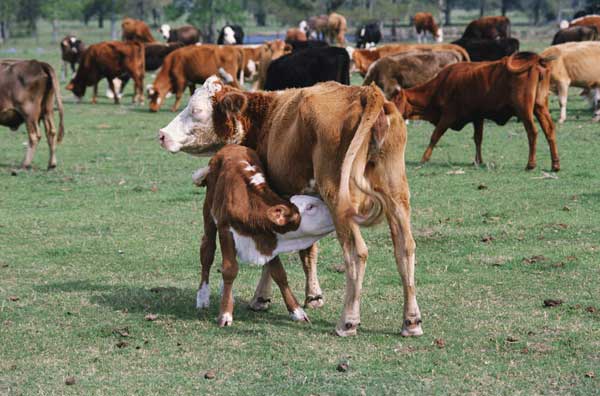
Internal parasites sap nutrients from cattle
Internal parasites cause significant economic losses to cattle herds if left untreated.Nutrition deficiency is the greatest negative effect from parasites.Cattlemen should consider application timing to make certain not to disrupt management of breeding environments.

Internal parasites cause significant economic losses to cattle herds if left untreated.
“It’s a rarity to find a cattle herd without a detectable level of internal parasites,” said Clay Wright, livestock consultant with the Samuel Roberts Noble Foundation in Ardmore, Okla.
Wright spoke at the annual Ag Technology Conference in Commerce, Texas.
He said worms, such as liver flukes, which are snail borne and prone to low, wet areas, are on the list. They emerge in late April, following the last freeze and persist until conditions dry out in the summer. And there are others.
Controls include pour-on products, injectible products and drenches. “Rotate products,” Wright says. “There is evidence of resistance.”
He also recommended that cattlemen consider application timing to make certain not to disrupt management of breeding environments. “Watch for parasite resistance and also negative host-parasite reactions.”
Impact of parasites (internal and external) on herd health and operation economics can be severe. “Parasites are a constant irritation. They increase nutrient demand, decrease weaning weights, lower milk production, reduce weight gains and affect breed-back ability with potential for decreased conception rates. Parasites also spread diseases, such as pink eye, and damage hides and meat.”
He said parasites can be the primary factor in vaccination failures. “Stress weakened the animal’s immune systems tremendously,” Wright said. He said a cow may not produce enough colostrum for a new born calf.
“But nutrition deficiency is the greatest negative effect from parasites,” he said. “In a cow/calf operation, reproductive performance is the number one driver of profit and nutrition drives reproduction.”
He explained that nutrition varies with the type of animal, the age of the animal and where in the reproductive cycle the animal might be. He said the hierarchy for nutrient demand is: (1) maintenance, (2) fetus, (3) milk production, (4) growth, (5) breeding and (6) fattening.
“Maintenance is first, followed by the other demands,” Wright said, “In order (as appropriate) and if nutrients are available. Milk production requires a big jump in nutrients needs. And growth is critical for anything not mature. Growth is not taken care of unless maintenance requirements are met first.
“A first-calf heifer requires a lot of nutrients for the fetus, growth and milk. Bulls and breeding females require ample nutrition or breeding capacity is affected.”
He said fattening “is a long way from maintenance requirements.”
If parasites re not controlled “they get their share of nutrients off the top,” Wright said. “They take away nutrients from the animal.”
He said lactating cows in good body condition (five or six) should have a 90 percent conception rate. Others will be at 60 percent or lower.”
Wright said cattlemen can judge nutrient deficiencies by looking at manure. “With nutrient deficiencies, digestion is slower and manure comes out drier. Cows eat less and performance declines. If manure looks like stacking up biscuits, something is seriously missing.”
Consistency should be closer to pancake batter, he said.
Cattlemen should know what they are feeding. “They have a lot of choices,” Wright said, “but they need a good analysis.”
About the Author(s)
You May Also Like





